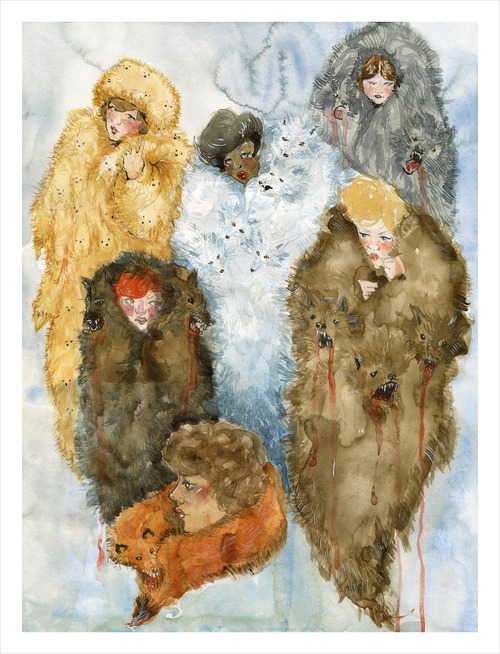
In Conversation with Shannon Shaw, Greer McGettrick and Hannah Lew
Some musicians shred their instruments. Some make striking visual art, too. Three modern examples include Hannah Lew of the bands Cold Beat and Grass Widow, Shannon Shaw of Shannon and the Clams, and Greer McGettrick, previously singer-guitarist of the ferocious The Mallard, and a revolving member of other bands like Carletta Sue Kay, Cold Beat and FRONDS.
In addition to playing bass, Hannah helps run two independent record labels and shoots films. She’s screened her work at the San Francisco Video Festival, Theatre Arteau and SFMOMA. A sample of her music videos include The Mantles’ “Hello,” King Tuff’s “Alone and Stoned” and Hunx’s “Private Room,” all of which belong on your playlist. Cold Beat put out its first full album in July, and she designed the cover and shot three videos for it. If you’re going to release a record on your own label, you might as well design the whole thing.
Even before retiring The Mallard in April 2013, Greer had been making woodcut prints and silkscreens. She’s used a number of her prints on concert posters for her band and others, including White Fence, Habibi and Thee Oh Sees. The print she made for Woolen Men would look like it belonged in the swinging sixties if it weren’t so modern and original. It took her two layers of paint and about a week of work, and it needs to be on an unbranded billboard─just boom, enjoy this, it’s for you, not Coke or blue jeans. Once she transcribed Faulkner’s novel The Sound and the Fury by hand and hung the pages as a thirty-five inch by sixty-five foot installation at the Michael Rosenthal Gallery in San Francisco because, why not? The first record by her newest musical project, ELINE COUT, is a collection of soundscapes called 13 pieces.
Shannon Shaw is a bass player and singer whose rich, gravelly voice you will always recognize once it graces your ears. In addition to playing in Shannon and the Clams, she plays with Seth Bogart in Hunx and His Punx, and played in Ty Segall’s one-off cover band The Togas. She also draws and paints. She painted Mark Bolan’s face. She painted the cover of Nobunny’s second album, First Blood. Another painting appears on the cover of the I Need You Bad compilation, which features Burnt Ones, Warm Soda, Sonny & the Sunsets and The Sandwitches. She’s shown some of her work in Bay Area galleries, including a show with Greer at a venue called Vacation.
So, how do they do it? When do they do it? Does...
You have reached your article limit
Sign up for a digital subscription and continue reading all new issues, plus our entire archives, for just $1.50/month.
Already a subscriber? Sign in




